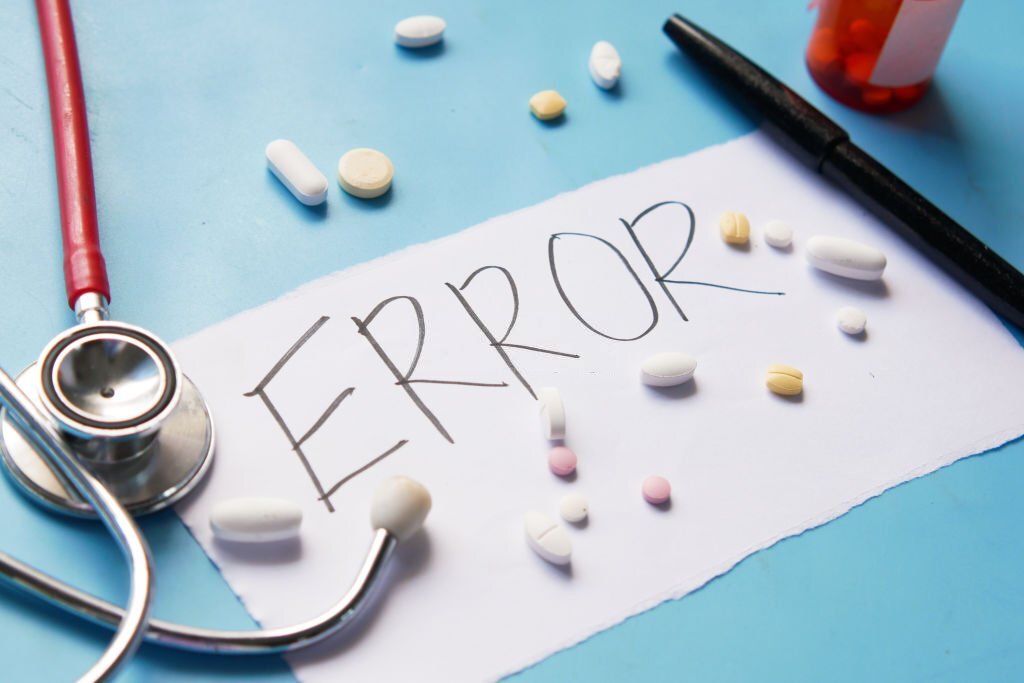Medication Error in the UK: What Are The Causes and How To Prevent It

Your medicine cabinet is one of the most dangerous places in your home. Medicines can interact with each other or cause an overdose that might lead to death. In this blog, we will look at how a medication error can happen and what you need to do to avoid it.
Modern Medicine: What You Need to Know
The UK is one of the world’s leading nations in medical research and innovation. But despite this, medication errors are still a big problem in the country.
medication errors result in around 700 deaths every year in the UK, and many more people are injured or develop long-term health problems as a result of these mistakes.
There are many different causes of medication errors, but some of the most common include:
1) Prescribing errors – where the wrong medication is prescribed for a patient, or the wrong dosage is given.
2) Dispensing errors – where the pharmacy dispenses the wrong medication or incorrect dosage.
3) Administration errors – where nurses or other healthcare professionals administer the wrong medication or incorrect dosage to patients.
4) Patient error – where patients take their medications incorrectly, or fail to follow instructions properly.
So what can be done to reduce the number of medication errors in the UK? Here are some key measures that should be put in place:
1) Improving communication between doctors and pharmacists.
2) Reviewing prescribing and dispensing processes to make them more robust.
3) Better training for healthcare professionals on how to prescribe and dispense medications safely.
4) Improved education for patients on how to take their medications safely and correctly.
Understanding The Different Classes of Medications
There are different classes of medications, and it’s important to understand the differences between them. Medications can be classified by their chemical structure, how they work, or what they’re used for.
Some common classes of medications include:
-Analgesics: These are pain relievers. They include over-the-counter drugs like ibuprofen and aspirin, as well as prescription opioids.
-Antibiotics: These are drugs that kill bacteria or stop their growth. They’re used to treat infections.
-Antidepressants: These drugs are used to treat depression and other mental health conditions. They can also be used to treat physical conditions like chronic pain.
-Anti-anxiety medications: These drugs are used to treat anxiety and panic disorders.
-Sleeping pills: These drugs are used to help people sleep. They include over-the-counter medications like diphenhydramine, as well as prescription medications like Ambien.
Dosage Amounts
It is estimated that there are around 237 million medication errors each year in the UK. These errors can occur in any setting, from hospitals to GP surgeries, and can have serious consequences for patients.
There are many different types of medication error, but one of the most common is prescribing the wrong dosage amount. This can happen if a prescriber misunderstood the patient’s medical history or mistakenly wrote down the wrong dose on the prescription. It can also occur if a pharmacist dispenses the wrong strength of medication or if a patient misunderstands how much they are supposed to take.
The consequences of taking too much or too little medication can be serious, and in some cases, fatal. That’s why it’s so important that everyone involved in a patient’s care takes great care to avoid making mistakes.
There are some simple steps that everyone can take to help prevent medication errors:
– Make sure you know the correct dosage for your medication before you start taking it. If you’re unsure, ask your doctor or pharmacist.
– Be careful when measuring out doses of liquid medication, as even small differences in the amount taken can make a big difference to the effectiveness of the treatment. Use a measuring device that is designed for the specific type of liquid medicine you are taking.
– Check that you have received the correct medication from your pharmacy before you start taking it. If you have any doubts, ask your
Potency Of Different Types of Drugs
There are different types of drugs available in the market and each one of them has its own potency. The potency of a drug is the amount of the active ingredient present in it. The higher the potency, the more powerful the drug is. In general, drugs with a higher potency are more expensive than those with a lower potency.
However, just because a drug is more potent does not necessarily mean that it is more effective. The efficacy of a drug depends on how well it works for the particular condition it is being used to treat. For example, some antibiotics may be very potent but not effective against certain types of bacteria.
When choosing a medication, patients should always consult with their healthcare provider to ensure that they are taking the most appropriate drug for their condition. Taking a medication with too high or too low of a potency can lead to serious side effects or even death.
Side Effects and Risks that Might Occur
There are many potential side effects and risks that might occur when taking medication, both prescription and over-the-counter. One of the most common risks is an allergic reaction, which can range from mild to severe. Other potential side effects include gastrointestinal problems, dizziness, drowsiness, headaches, and changes in heart rate. Some medications may also interact with other medications or supplements that you are taking, so it is important to always check with your healthcare provider before starting or stopping any medication.
One of the most serious potential risks of taking medication is a Medication Error. Medication Errors can occur when a patient takes the wrong medication, takes the wrong dose of a medication, or has a bad reaction to a medication. Medication Errors can be life-threatening and often result in hospitalization or death. In the UK alone, there are an estimated 22,000 Medication Errors each year.
There are several steps that you can take to help prevent Medication Errors from occurring:
- Always read the label on your prescription bottles carefully and make sure you understand the instructions before taking any medication.
- If possible, have your prescriptions filled at one pharmacy so that your pharmacist can keep track of all the medications you are taking and watch for possible drug interactions.
- When starting a new medication, be sure to ask your healthcare provider about any possible side effects or interactions with other medications you are taking.
Medication Errors That Are Commonly Made
There are many different types of medication error that can occur. Some of the most common include:
-Dispensing errors: This is when the wrong medication is given to a patient. This can happen if the pharmacist dispenses the wrong medication, or if the prescription is unclear.
-Administration errors: This is when the medication is given to the patient in the wrong way. For example, the wrong dose may be given, or it may be given at the wrong time.
-Prescribing errors: This is when the wrong medication is prescribed for a patient. This can happen if the doctor prescribes the wrong medication, or if the prescription is unclear.
-Monitoring errors: This is when patients do not receive proper monitoring while taking their medication. This can lead to serious side effects or even death.






